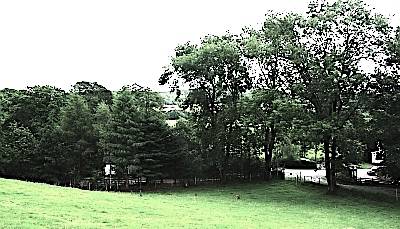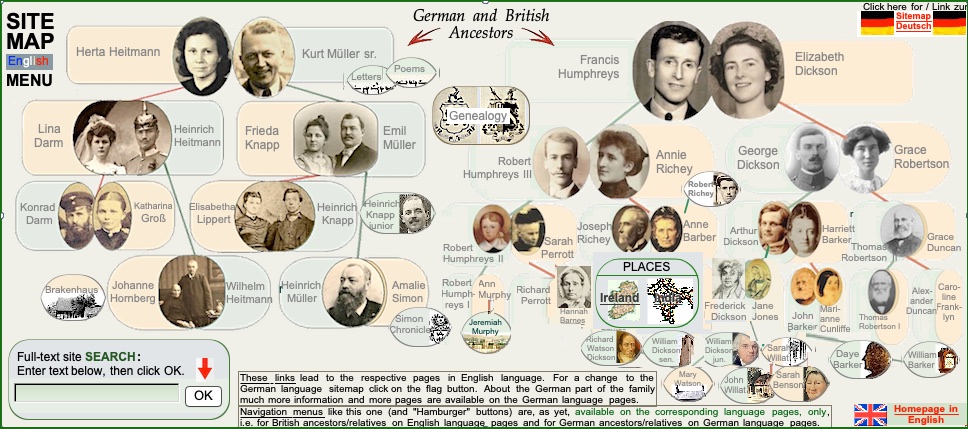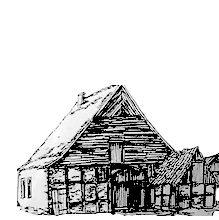



Diese Seite auf
Deutsch
Deutsch
Family history Müller - Humphreys
Blackbeck, Bouth, Ulverston, Cumbria, England 54.26° N Latitude 3.03° 'W Longitude
<< back <<
>> next >>
© Kurt Müller 2020




Homepage auf
Deutsch
Deutsch




Homepage in
English
English
Blackbeck, near Bouth (Ulverston), named after the nearby stream Black Beck (see below), was the seat of the Benson family in the 17th and 18th century. Also in the 19th century it appears to have been an important estate, as possibly reflected in this map from about 1830 (see right), but probably not as its owners' (see below) residential home.
Blackbeck
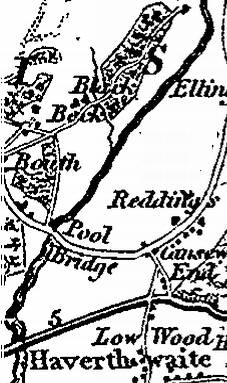
Blackbeck had been part of the possessions of the Sawrey family from
Plumpton Hall
before Anthony Sawrey sold it, in 1618, to his stepfather Arthur Benson, from Skelwith. This purchase seems to have established the line of the "of Blackbeck"s, Arthur Benson thus being the "1st of Blackbeck". He was followed by his son Edwin, his grandson William, and his great-grandson Arthur who is mentioned as the "4th of Blackbeck". Then his son William - who also purchased the estate of Lindeth in 1779 - and his granddaughter Elizabeth followed who died unmarried in 1809 and left the estate to her cousin Arthur Benson as the "7th of Blackbeck". He was followed by his three sisters Agnes, Sarah, and Frances, all unmarried and without issue.
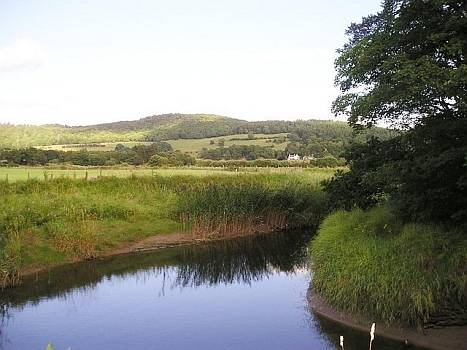





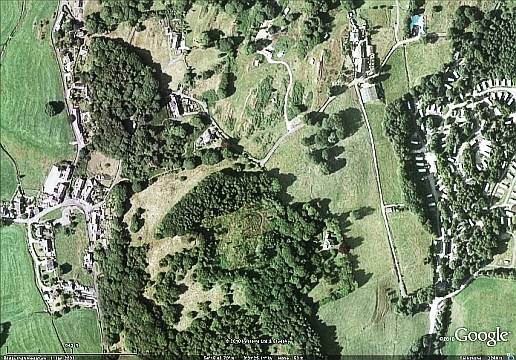
Black Beck
farm
farm
Great Lindeth
Black Beck
Caravan Park, until 1928: Blackbeck gunpowder mill
Caravan Park, until 1928: Blackbeck gunpowder mill
Black Beck
stream
stream
Lindeth farmhouse
Black Beck
stream
stream
Above: The area of Blackbeck or Black Beck
Bouth
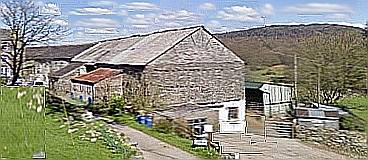
Left:
A Blackbeck farm building today
Below: Old buildings, probably from the times of the Gunpowder mills or earlier, are now part of the
Black Beck Holiday Park
.
Above: Example of a horse drawn railway like at Black Beck Gunpowder Works. To avoid explosions the railway was pulled by horses instead of engines. The horses were shod with copper to prevent explosions that could have been sparked by iron shoes.
The Gunpowder mill had a connection to the Furness railway (between Lakeside and Haverthwaite, from 1869 to 1965), joining it at a junction point "between Lady Syke and Haverthwaite known as
Dickson's siding
. ...The traffic was marshalled at Greenodd and was pushed in front of the main train as far as the siding. From there it was drawn by horses up the valley of the Black Beck to the works which was half a mile north-east of the village of Bouth." (from: Steam Nostalgia, by Gerald Nabarro*, London 1972) The former Furness railway was reopened, by "private enthusiasts", as a steam railway in 1973 (called the
Lakeside and Haverthwaite Railway
).
Below:
a charcoal kiln,
19th century. Charcoal was
one of the raw materials for the production of gunpowder at Blackbeck.
Below: Leftovers of a Gunpowder mill

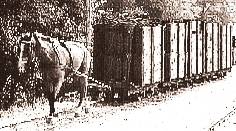
Bouth, the village near Blackbeck, used to be a prosperous, busy place until 1829. Then a new road opened south of Bouth which kept away all the traffic that before had passed through. Bouth became a sleepy backwater almost overnight and remained so until 1860.
The railway delivered sulphur, saltpetre, charcoal and 40 tons of steam coal each week to the Dickson siding. From there the wagons were pulled by shire horses to and from the mills. It was considered far too dangerous for coal fired steam trains to come into the works as sparks from the engine could cause explosions. Although the works were powered by steam a good clean source of fresh water was still required and was provided by a small beck running through the site from which the farm and the works took their names." (From the former website www.levenvalleyhistory.co.uk)
Eventually, after the death of the last heir of the surname Benson, in 1835 the estate was inherited by
George Frederick Dickson
, the son of Arthur's and Elizabeth's cousin
Sarah Dickson
, née Willatt, who was the daughter of
Sarah Willatt
, née Benson, the old postmistress of Manchester. So George Frederick Dickson became the "11th of Blackbeck". After him his son
Arthur Benson
and his grandson
George Frederick Hayes
were owners of Blackbeck.


Menu
o
* The author,
Gerald Nabarro
, was the husband of a Dickson descendant. On 1 June 1943 he married Joan Violet, granddaughter of the above mentioned F.C.Dickson and daughter of Bernhardt Basil von Brumsey im Thurn, a British Army officer of Swiss ancestry (family
Im Thurn
from Schaffhausen, first mentioned in 1106). Nabarro was from a prominent Sephardi Jewish family and a Conservative Member of Parliament from 1966 to 1973. He was also the owner of a famous moustache (see left, photograph from Wikipedia). Information provided by John Humphreys.
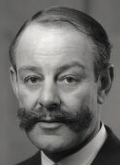
One of the ten explosions which happened at Blackbeck between 1860 and 1928 (see left) occurred on the 19th January 1898. Traces of this explosion are documented by a series of photographs taken partly soon after it happened, and partly in 1900, possibly by Ida Dickson who was a keen photographer, and collected by her mother
Harriett née Barker
, the prolific Dickson family historian with opulent, widely unexploited remains who had a family connection to the gunpowder business of her own: starting in 1798, her grandfather
Daye Barker
had, with three partners, run a gunpowder factory at
Low Wood
, on grounds rented from the Bigland family of Bigland Hall, the family from which also F.C.Dickson's first wife Sophia, Maurice's mother, descended.


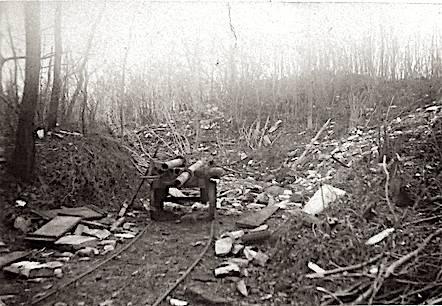

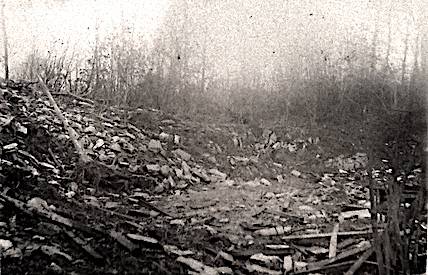

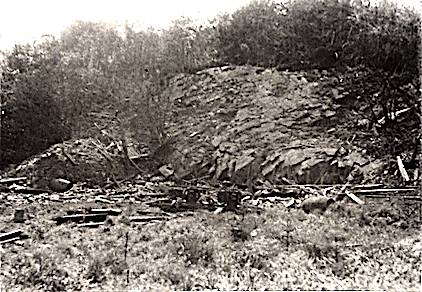

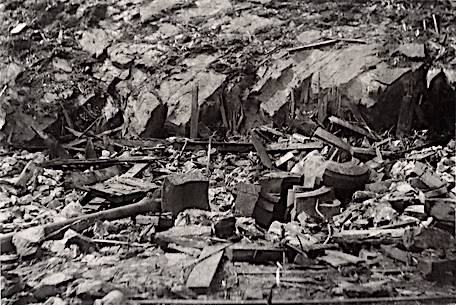

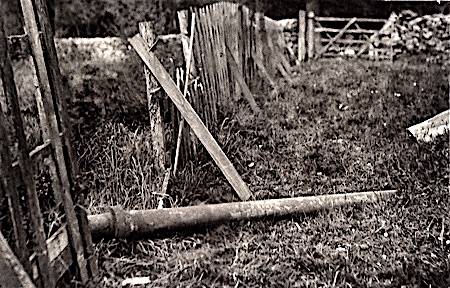

But: "The village regained some of its former importance when the Dickson family opened Gunpowder mills at Blackbeck in 1860. These mills eventually employed more than 70 people, and provided employment for the next 68 years. Father, sons and daughters followed each other into this very dangerous industry. Blackbeck suffered ten fatal explosions in which 33 men were killed before the works closed in 1928." (from:
Brief History of Bouth
by Ron Mein), also see right.
The Gunpowder mill was at first - and foremost - run by G.F.Dickson's eldest surviving son Frederick Cartwright Dickson (often mentioned as "F.C. Dickson") on the grounds of the Blackbeck estate. "The Ulverston Mirror announced in 1860 that Mr F.C.Dickson had applied to the Lancaster quarter sessions for a license to manufacture gunpowder at Bouth and that the application had been successful.
Unlike the other gunpowder mills in the area, which used water power to drive their machinery, Blackbeck used a large triple expansion steam engine, which was unique. Eventually the works were taken over by W H Wakefield in 1882 as were the other nearby Lowwood powder mills. In the early days raw materials were brought into the Leven estuary by sea, gunpowder other than local sales was also transported by sea.
In 1869 the Furness Railway opened its branch line from Ulverston to Lakeside, and the powder mills took full advantage of the opportunity it gave. The works were linked to the railway by a full gauge tramline that ran from inside the works along a raised embankment to Pool Bridge, it then followed the western bank of the river to River Leven estuary which it crossed over a purpose built 200 foot long girder bridge joining the main line at the
Dickson Siding
.
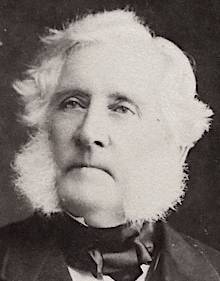
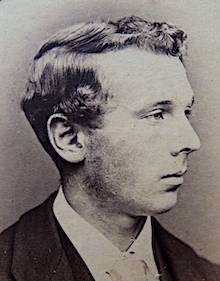
Above: The entrepreneur Frederick Cartwright Dickson (1814-1907) and his son and successor Maurice (*1853, below). Blackbeck was leased to them by its owner, Frederick's brother
Arthur
.
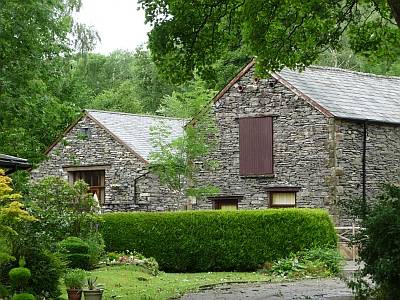
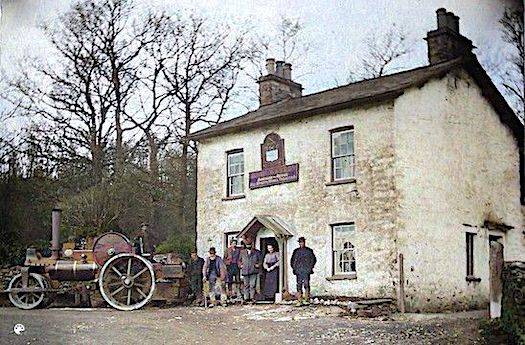
Right: from Burke, "Genealogical and heraldic
history of the landed gentry", Vol.1
Above: The "Dickson's Arms" (before 1860: "Black Lion"), an inn which belonged to the Dickson estate, situated half way between "Dickson's siding" (see explanation last paragraph of this page) and Blackbeck, next to the tramway line. Photo taken about 1895. Today the
Rusland Pool Hotel
. (Picture "colorized" with "DeOldify" licensed by MyHeritage).
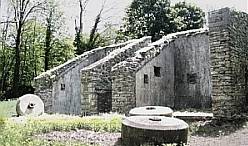

Left:
View of the Blackbeck site today
